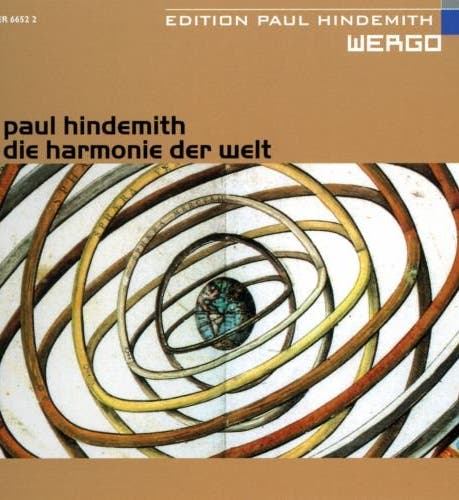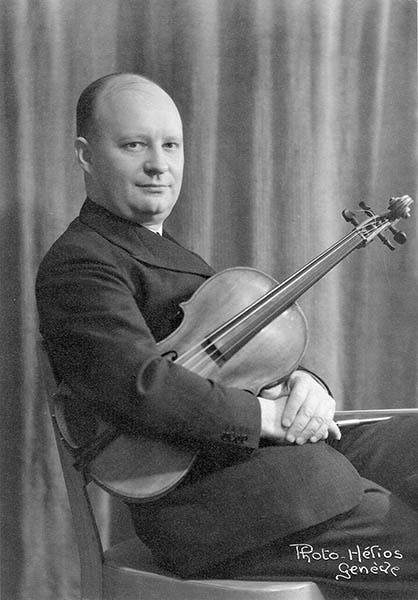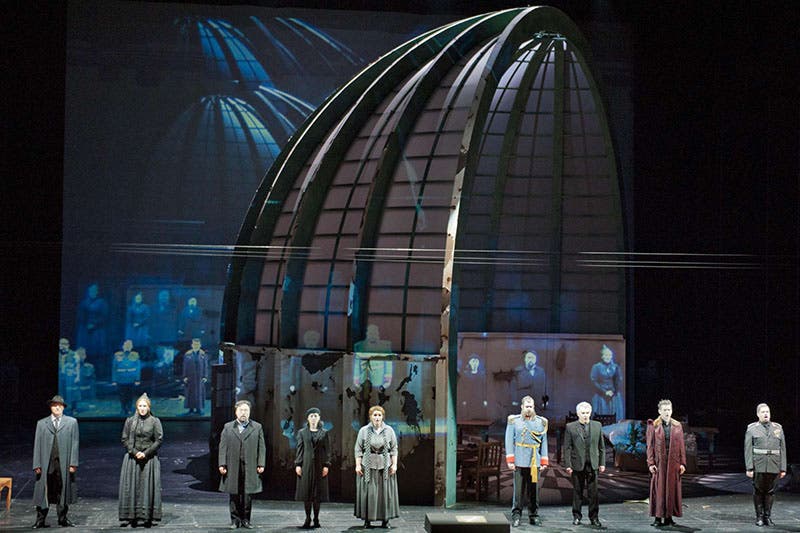Scientist of the Day - Paul Hindemith
Paul Hindemith, a German composer, was born Nov. 16, 1895. Hindemith wrote 11 operas, the most popular being Mathis der Maler (1938), about the Renaissance artist Matthias Gr�ünewald and his struggle for freedom of expression during the Peasants Revolt of the early Protestant Reformation. Almost 20 years elapsed before the 1957 world premiere of his next opera, Die Harmonie der Welt, a musical drama about the astronomer Johannes Kepler. The name of the opera was taken from the title of Kepler's book, Harmonices mundi (The Harmonies of the World, 1619), in which Kepler announced his discovery that cosmic harmony is to be found in the changing velocities of the planets as they move in their elliptical orbits about the sun. Since Kepler's Harmonices Mundi is much more about music than astronomy, and since the search for the harmony of the spheres was the central focus of Kepler’s interest in astronomy, Kepler and the Harmonices Mundi would seem to be ideal candidates for a musical setting, which Hindemith was happy to provide.
Hindemith's Harmonie deals with the last two decades of Kepler's life, during which he moved from the Emperor’s side in Prague to the city of Linz, where he lived from 1612 to 1626. During his time there, Kepler wrote his own Harmonices and had to defend his mother in a prolonged witchcraft trial. In 1626, Linz was besieged as the Thirty-Years War raged, and Kepler was forced to move to Ulm, where he was drawn into the circle of the General of the Imperial Army, Albrecht von Wallenstein, who wanted Kepler to provide him with horoscopes favorable to his campaign. As with Matthias Grünewald in Mathis der Maler, Hindemith contrasts the search of the artist for beauty and order to the intent of nearly everyone else to create as much ugliness and disorder in this world as possible. As I write this, I cannot help but think of the marginal insert in Kepler's Harmonices mundi, on the same page in which he has presented a memorable image of the songs of the planets, as each planet speeds up and slows down, thus moving up and down on the musical scale, playing out with the other planets a cosmic motet. The Earth's tune, which it sings over the course of a year, is mi-fa-mi. In a marginal note just below, which I show you in detail here, Kepler writes: Tellus canit MI FA MI ut vel ex syllaba conjicias, in hoc nostro domicilio MIseriam & FAmem obtinere – “The Earth sings MI FA MI , as if drawing those syllables from the MIsery and FAmine that are found in our world." I don't think this plays a role in Hindemith’s opera, but it does agree with his theme that we must look beyond our mortal coil to find the harmony of the cosmos.
Hindemith must have felt considerable kinship with Kepler, as Hindemith fell out of favor with the Nazi government, who wanted his music to be tailored toward state ends, and had to move to Switzerland and the United States to pursue his own search for harmony.
The 1957 premiere of Die Harmonie der Welt was vigorously panned by one single critic, which seemed to poison the pond, and the opera disappeared for 45 years. But in 2002, the opera was recorded and released, to great acclaim and surprise, as it was now evident that Die Harmonie der Welt is a masterpiece and at least the equal of Mathis der Maler (first image). I have not seen the opera (I don't think it has ever been staged in this country), nor have I been able to find the libretto, but the 14 scenes (in 5 acts) of the 2002 recording are each available on YouTube, along with the two preludes (you can start here), and I have listened to them all. It is hard to judge without the libretto, but the music is certainly appealing, especially in the last scene, when each of the main characters assumes the role of a planet in the solar system, in what must be a grand finale (fourth image), and Kepler dies and finds his harmonic peace. The opera was staged in 2017 in Linz, a city enormously proud of Kepler; there is a trailer for their production on YouTube. Linz had earlier staged (in fact, commissioned) Philip Glass's opera Kepler in 2009, and that one was filmed and later released on DVD. I hope they follow that up with a similar release of Die Harmonie der Welt.
I note that the Wikipedia biography of Hindemith does not even mention Die Harmonie der Welt (although there is a separate article on the opera). Consider this a call for a rewrite.
Finally, I cannot help mentioning that the lovely image of planetary circles on the cover of the recording (first image) comes from a plate in the appropriately-titled Harmonia macrocosmica of Andreas Cellarius (1661), a work we have in our collections.
Dr. William B. Ashworth, Jr., Consultant for the History of Science, Linda Hall Library and Associate Professor emeritus, Department of History, University of Missouri-Kansas City. Comments or corrections are welcome; please direct to ashworthw@umkc.edu.









